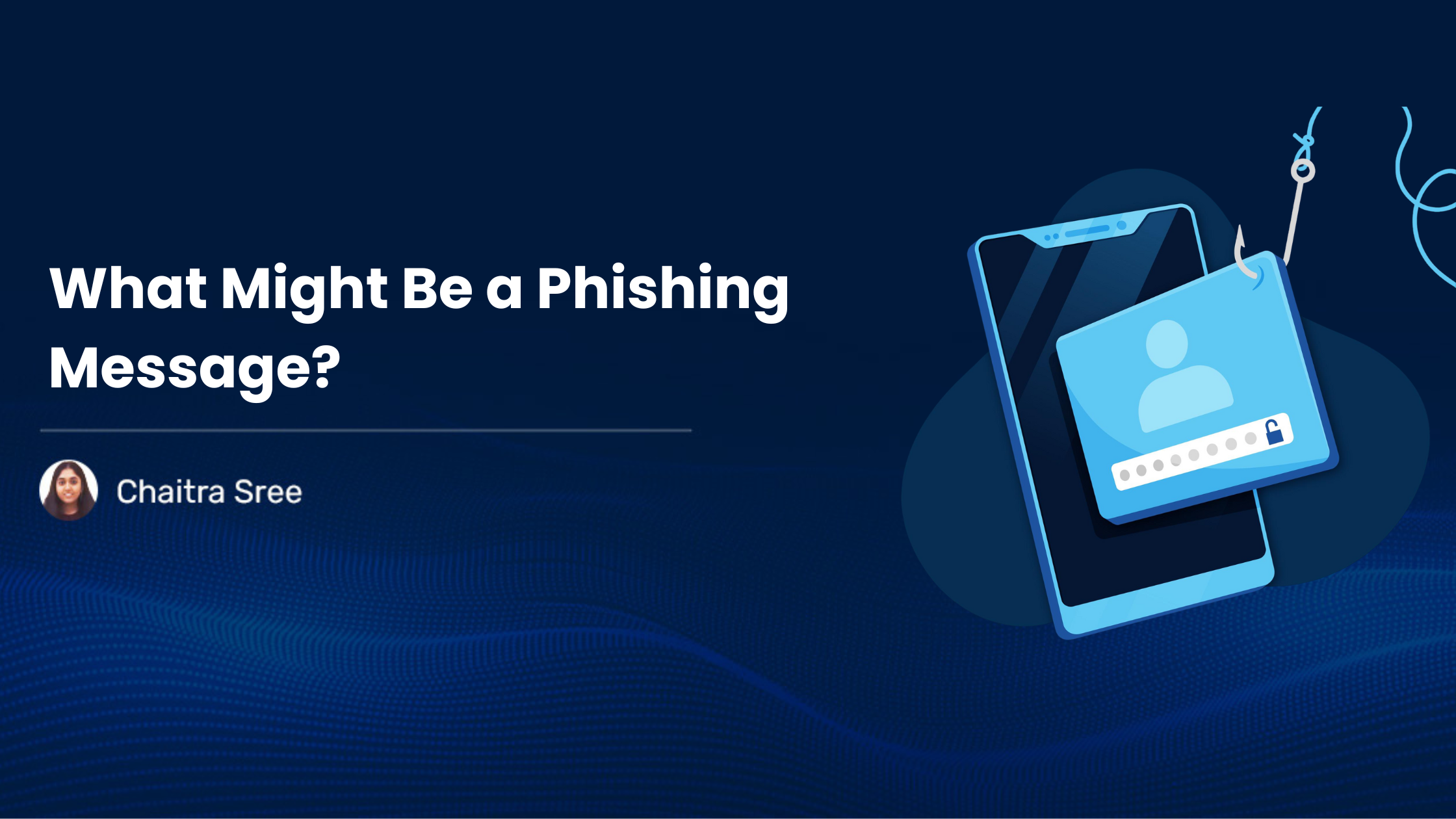Phishing remains one of the most common and dangerous cybersecurity threats facing individuals and organizations today. It’s often the entry point for more serious attacks, including ransomware, data theft, and business email compromise.
In this blog, we’ll explore what phishing messages look like, how to identify them, and why they’re so effective, along with practical steps to protect yourself and your organization.
What is a Phishing Message?
A phishing message is a fraudulent communication typically sent via email, but also common through SMS, messaging apps, or phone calls, that pretends to be from a trusted entity. The goal is to trick the recipient into:
- Clicking a malicious link
- Downloading a harmful file
- Sharing sensitive information like passwords, OTPs, or payment details
Phishing messages often impersonate banks, service providers, popular brands, or even internal team members like your IT department or CEO.
What Does a Phishing Message Look Like?
Phishing attempts can be highly convincing and sophisticated. Some messages are easy to spot, but others closely mimic real communications, down to the logos, sender names, and formatting.
Here are common examples of phishing messages:
- Account-related scams:
“Your account has been suspended. Click here to verify your identity.” - Payment or delivery fraud:
“Your recent payment was declined. Please update your card details.” - Impersonation of leadership:
“This is your manager. Can you urgently process a wire transfer?” - Fake login pages:
“You’ve been signed out of Microsoft 365. Log in again to continue.”
Key Characteristics of a Phishing Message
Knowing the red flags can help you spot phishing attempts before damage is done. Look out for:
- Urgency or Threats
Language like “Act Now,” “Final Notice,” or “Your account will be closed” is meant to pressure you. - Suspicious Email Addresses
The sender may appear legitimate at a glance, but check the full email address; often it’s misspelled or from a random domain. - Poor Grammar or Formatting
Legitimate companies rarely send out error-ridden messages. Misspellings are a common sign of phishing. - Unexpected Attachments or Links
If you weren’t expecting a file or link, don’t open it. Always verify first. - Requests for Sensitive Information
Reputable companies will never ask for passwords, OTPs, or banking info via email or SMS.
Why Phishing Works
Phishing attacks are effective because they exploit human behavior. They use social engineering to manipulate emotions like fear, curiosity, or urgency. Unlike technical attacks that exploit software vulnerabilities, phishing relies on people making quick, unguarded decisions.
That’s why even tech-savvy professionals fall victim. A single click on a seemingly harmless email can result in compromised credentials or malware installation.
How to Protect Yourself and Your Organization
1. Think Before You Click
Pause and examine the message. If something feels off, it probably is.
2. Verify Independently
Don’t click links or call phone numbers in the message. Contact the sender through official channels to confirm.
3. Hover to Inspect Links
Hover your mouse over links to see the actual URL. Look for strange domain names or misspelled URLs.
4. Use Multi-Factor Authentication (MFA)
Even if your credentials are stolen, MFA adds an extra layer of protection.
5. Educate and Train Teams
Regular security awareness training helps employees identify and report phishing attempts.
6. Use Email Security Tools
Invest in solutions that detect and block phishing emails before they reach inboxes.
Final Thoughts
Phishing may be one of the oldest tricks in the cybercriminal playbook, but it remains one of the most effective. The key to defense lies in awareness, vigilance, and a proactive security posture.
Every suspicious message doesn’t need to be a threat, but every threat starts with a single message.
Stay informed. Stay alert. And always think before you click.

